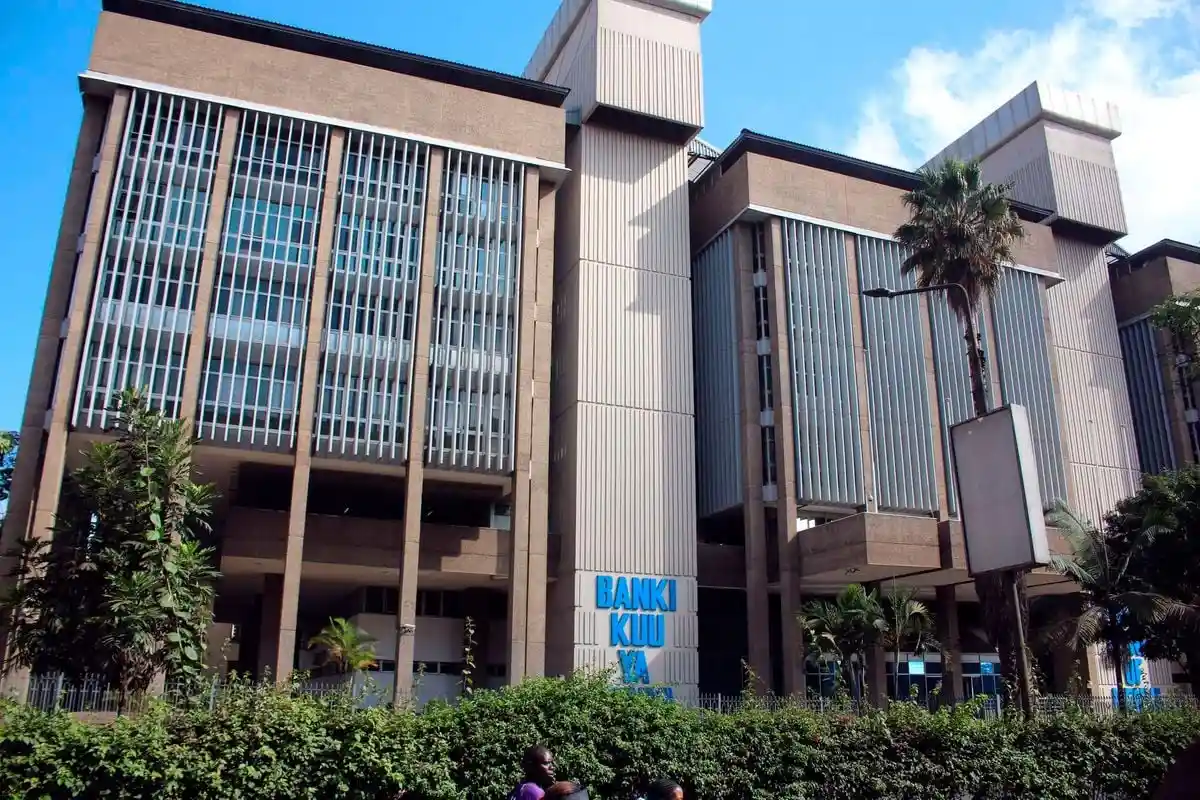Despite confronting a challenging economic environment marked by slower GDP growth, elevated interest rates, and mounting operational expenses, Kenya’s banking sector demonstrated its critical importance to national revenue mobilization by collectively contributing Sh194.8 billion in taxes to the government during 2024. This substantial tax payment underscores the financial sector’s pivotal role in supporting government operations and development initiatives, even as banks navigate increasingly complex regulatory requirements and competitive market pressures.
According to the comprehensive Total Tax Contribution of the Kenya Banking Sector 2024 Report jointly published by the Kenya Bankers Association (KBA) and PwC Kenya, this remarkable tax contribution represented 8.09 percent of all government tax receipts collected during the year. This percentage highlights what the report characterizes as the Treasury’s heavy dependence on a relatively small group of highly compliant corporate taxpayers who consistently fulfill their tax obligations despite prevailing economic headwinds.
Build the future you deserve. Get started with our top-tier Online courses: ACCA, HESI A2, ATI TEAS 7, HESI EXIT, NCLEX-RN, NCLEX-PN, and Financial Literacy. Let Serrari Ed guide your path to success. Enroll today.
The report’s findings are based on data collected from 36 participating banks and microfinance institutions operating across Kenya, providing a comprehensive overview of the sector’s tax burden and its evolving relationship with government fiscal policy. These participating institutions represent the overwhelming majority of Kenya’s formal banking sector, encompassing large commercial banks, medium-sized lenders, and microfinance institutions that serve diverse customer segments across urban and rural areas.
Substantial Tax Burden Relative to Profitability
One of the report’s most striking findings relates to the effective tax rate faced by Kenya’s banking institutions. For every Sh100 in profit generated by the sector, the exchequer collected Sh38.50 in various forms of taxation. This represents an effective tax burden of 38.5 percent on banking sector profits, significantly higher than the corporate tax rates faced by many other industries and reflecting the multiple layers of taxation that financial institutions must navigate.
This high effective tax rate encompasses not only direct corporate income tax but also various other levies, duties, and collected taxes that banks are responsible for remitting to government coffers. The figure illustrates the banking sector’s role as both a taxpayer in its own right and as a crucial intermediary in the government’s tax collection machinery, gathering taxes from employees, customers, and business partners throughout the economy.
Composition of Tax Contributions: Borne Versus Collected
The Sh194.8 billion total tax contribution comprised two distinct categories that reflect different aspects of the banking sector’s fiscal responsibilities. The first category, taxes borne, amounted to Sh100.12 billion and represents direct costs to the banks themselves. This category primarily consists of corporate income tax paid on bank profits, but also includes other direct levies such as excise duty on financial services and various regulatory fees.
The second category, taxes collected, totaled Sh94.69 billion and represents amounts that banks collected on behalf of the government from various sources. The largest components of this category include Pay As You Earn (PAYE) deducted from employee salaries and withholding tax collected from interest payments to depositors and other financial transactions. This collected tax component highlights banks’ crucial role as tax collection agents for the Kenya Revenue Authority, processing billions of shillings in tax payments from millions of individuals and businesses.
Historical Growth Trajectory and Pandemic Recovery
Raymond Molenje, Chief Executive of the Kenya Bankers Association, emphasized that the sector’s tax contribution has demonstrated steady growth since 2021, when Kenya’s economy began its recovery from the devastating economic impacts of the Covid-19 pandemic. This upward trajectory in tax payments reflects both the resilience of the banking sector and the broader economic recovery that has occurred over the past several years.
“The Sh194.81 billion tax contribution by 36 participating banks in 2024 highlights the sector’s central role in Kenya’s revenue mobilisation. The banks’ voluntary participation also reflects a strong commitment to transparency and responsible governance,” Molenje stated, emphasizing the sector’s collaborative approach to fiscal transparency and its recognition of the importance of supporting government revenue needs.
The historical data presented in the report reveals the scale of this growth trajectory. In 2021, as the economy began reopening after pandemic-related restrictions were lifted, the banking sector’s total tax contribution surged to Sh129.5 billion, representing a substantial 23.59 percent increase compared to 2020. This dramatic rebound was largely attributed to the resumption of normal economic activity, which led to higher corporate taxes due to improved profitability, increased excise duty collections as transaction volumes recovered, and higher withholding tax payments as interest income and other financial flows normalized.
The growth trend continued in subsequent years, demonstrating the sector’s expanding role in government revenue generation. In 2022, the banking sector contributed Sh181.27 billion in taxes, followed by Sh190.26 billion in 2023, and finally reaching Sh194.81 billion in 2024. While the year-on-year growth rate has moderated in recent periods, the absolute increases remain substantial and reflect the sector’s continued expansion and profitability despite challenging economic conditions.
Shifting Composition of the Tax Burden
One of the report’s most significant analytical contributions involves its examination of how the composition of the banking sector’s tax burden has evolved over time. During the 2024 review period, the study observed notable shifts in the relative importance of different tax categories, reflecting changes in both government tax policy and the economic environment facing banks.
Corporate income tax remained the single largest component of the sector’s tax burden at Sh69.41 billion, accounting for 35.63 percent of total taxes paid or collected by banks. However, this represented a 4.98 percent decline compared to 2023 figures, a decrease that the report attributed to several factors including pressure on bank profitability from elevated funding costs and increased loan loss provisions in response to challenging economic conditions.
The relative decline in corporate tax contributions was offset by a notable rise in what the report categorizes as “people-related taxes,” a category driven primarily by employment-related levies. The most significant contributor to this shift was the full-year implementation of the Affordable Housing Levy, a new mandatory contribution introduced by the Kenyan government to fund social housing development. Collections from the banking sector under this levy more than doubled during the review period, surging 113 percent to reach Sh3.45 billion.
This dramatic increase in affordable housing levy collections reflects both the full-year effect of the policy (which was introduced partway through 2023) and the banking sector’s substantial payroll base. With tens of thousands of employees across the country, banks represent one of the largest formal-sector employers subject to this levy, making them a significant source of revenue under this new fiscal measure.
Strategic Importance to Government Revenue
Peter Ngahu, Country and Regional Senior Partner for Eastern Africa at PwC, emphasized the strategic significance of the banking sector’s outsized contribution to government revenue. “The percentage contribution from the 36 banks highlights their vital role in supporting national revenue collection. It highlights the continued reliance on a few highly compliant taxpayers. This data informs the essential dialogue around tax policy needed to ensure the sector remains robust,” Ngahu observed.
This concentration of tax revenue from a relatively small number of highly compliant institutions presents both opportunities and risks for government fiscal planning. On one hand, it simplifies tax administration and ensures reliable revenue flows from sophisticated entities with strong compliance capabilities. On the other hand, it creates dependency on a limited number of sectors and institutions, potentially making government revenue vulnerable to sector-specific shocks or economic downturns that disproportionately affect banking.
One decision can change your entire career. Take that step with our Online courses in ACCA, HESI A2, ATI TEAS 7, HESI EXIT, NCLEX-RN, NCLEX-PN, and Financial Literacy. Join Serrari Ed and start building your brighter future today.
Value Distribution Among Stakeholders
The report provided detailed analysis of how banks distributed the economic value they created among various stakeholder groups during 2024. This stakeholder value analysis offers important insights into the economic priorities and constraints facing banking institutions.
The government emerged as the largest beneficiary of banking sector value creation, receiving 54.95 percent of distributed value through various forms of taxation. This majority share underscores the heavy tax burden facing banks and raises questions about whether current tax levels are sustainable in the long term without potentially constraining the sector’s ability to invest in technology, expand services, and support economic growth.
Employees represented the second-largest stakeholder group, receiving 25.62 percent of distributed value through salaries, benefits, and other forms of compensation. This substantial allocation reflects the banking sector’s role as a major employer of skilled professionals and its importance to Kenya’s emerging middle class. The sector’s employment contribution extends beyond direct job creation to include supporting numerous indirect jobs in sectors that service banks and their employees.
Shareholders received 19.44 percent of distributed value through dividend payments, representing the returns earned by investors who have provided capital to support banking operations. This shareholder distribution reflects both the profitability of the sector and the expectations of investors for reasonable returns on their invested capital. The relatively modest share going to shareholders compared to government and employees highlights the multiple claims on banking sector profits and the balancing act that bank management must perform in allocating value among competing stakeholder groups.
Administrative Burden of Tax Compliance
Beyond the direct financial cost of taxes paid, the report drew attention to the substantial administrative burden that tax compliance imposes on banking institutions. This often-overlooked aspect of taxation represents a significant hidden cost that affects sector efficiency and diverts resources from more productive activities.
The study found that banks face considerable administrative costs linked to tax compliance activities. On average, each participating bank employs three full-time staff members dedicated exclusively to tax-related work. At an estimated annual cost of approximately Sh13.5 million per institution, this represents a substantial ongoing expense that must be factored into assessments of the total cost of taxation. Across the 36 participating institutions, this translates to over 100 dedicated tax compliance professionals and aggregate costs exceeding Sh486 million annually.
These compliance costs reflect the complexity of Kenya’s tax system and the multiple reporting requirements that financial institutions must satisfy. Banks must navigate corporate tax calculations, value-added tax rules for various services, excise duty on specific transactions, withholding tax obligations across numerous payment types, PAYE administration for thousands of employees, and various other levies and reporting requirements.
Proposals for Reducing Compliance Burden
In response to concerns about administrative burden, study participants proposed several specific measures that could ease compliance costs while maintaining or improving tax collection effectiveness. These proposals, which emerged from consultations with tax managers and compliance officers across participating institutions, reflect practical insights from professionals dealing daily with tax compliance challenges.
A primary recommendation involved returning to monthly withholding tax filings rather than the current five-day filing requirement that was cited as a particular administrative challenge. The current five-day deadline creates significant pressure on tax departments, requiring rapid processing of transaction data and leaving little room for error correction or quality assurance. Monthly filings would provide more reasonable timeframes for ensuring accuracy while still maintaining regular tax remittances to the government.
Participants also strongly advocated for expanding automation in tax compliance processes through better integration with systems such as iTax (the Kenya Revenue Authority’s online tax portal) and eTIMS (the Electronic Tax Invoice Management System). “There is a clear call for more automation, such as the pre-filled returns as part of VAT compliance, and clearer tax guidelines on aspects such as digital compliance tools,” the report noted.
The potential benefits of enhanced automation are substantial. Pre-filled tax returns, where the tax authority automatically populates returns with information it already possesses, could dramatically reduce the time and resources banks must dedicate to preparing basic filings. Similarly, seamless integration between banks’ internal systems and government tax platforms could eliminate duplicate data entry, reduce errors, and speed up the filing process.
Complexity Assessment of Tax Compliance Processes
To quantify the challenges facing tax compliance professionals, the study assessed the complexity and difficulty of various tax compliance processes. Using a five-point scale, participants rated the overall process of filing tax returns at 3.27 out of 5, indicating moderately difficult compliance requirements that present meaningful challenges even for sophisticated institutions with dedicated tax expertise.
This moderate-to-high difficulty rating is particularly significant given that the assessment comes from large, well-resourced banking institutions with professional tax departments. If these institutions find tax compliance moderately difficult, smaller businesses with fewer resources likely face even greater challenges in meeting their tax obligations, potentially contributing to lower compliance rates in other sectors of the economy.
Macroeconomic Context of 2024 Performance
The banking sector’s tax contribution during 2024 must be understood within the broader macroeconomic context that shaped business conditions throughout the year. According to data from the Kenya National Bureau of Statistics (KNBS), Kenya’s macroeconomic environment during 2024 was characterized by moderate growth, with real GDP expanding by 4.7 percent, down from the 5.7 percent growth rate achieved in 2023.
This growth deceleration reflected weakness in several key sectors of the economy. The construction sector, which had been a major driver of economic expansion in previous years, experienced slower growth due to reduced government infrastructure spending and tighter credit conditions that affected real estate development. The mining sector also underperformed, contributing to the overall growth slowdown.
However, these weaknesses were partially offset by stronger performance in other sectors. Agriculture benefited from generally favorable weather conditions that supported crop production. The finance, insurance, and real estate sectors showed resilience despite challenging conditions. Transport and logistics also contributed positively to growth, supported by continued expansion of Kenya’s position as a regional trade and logistics hub.
Interest Rates, Inflation, and Credit Dynamics
The report explicitly linked the economic environment to banking sector performance and tax outcomes. “The prevailing environment of elevated interest rates, inflationary pressures, and moderated credit uptake also shaped both sector performance and tax outcomes,” the report noted.
Throughout 2024, Kenya maintained relatively high interest rates as the Central Bank of Kenya (CBK) prioritized inflation control and currency stability. While this monetary policy stance helped contain inflationary pressures and supported the shilling, it also increased borrowing costs for businesses and consumers, dampening credit demand and potentially constraining economic growth.
The elevated interest rate environment had complex effects on bank profitability and taxation. On one hand, higher rates increased net interest margins on existing loan portfolios, supporting bank revenues. On the other hand, higher rates reduced credit uptake as fewer businesses and individuals found borrowing economically attractive at prevailing rates. This credit growth slowdown limited the expansion of banks’ earning asset bases and contributed to more modest profit growth than might otherwise have been achieved.
Inflationary pressures, while moderating from earlier peaks, remained present throughout 2024, affecting both bank operating costs and customer behavior. Rising costs for everything from employee salaries to technology infrastructure pressured bank expense ratios, while inflation-wary consumers and businesses became more cautious about taking on new debt obligations.
Policy Implications and Future Outlook
The findings of the Total Tax Contribution report carry important implications for future tax policy and the relationship between government and the banking sector. The demonstrated heavy reliance on banking sector tax contributions raises questions about the sustainability and wisdom of continuing to increase the tax burden on this sector.
KBA’s Molenje suggested that the findings “provide crucial insights for policymakers as they consider how to balance fiscal sustainability with sector resilience.” This framing highlights the inherent tension between the government’s legitimate need for revenue to fund essential services and development priorities, and the risk that excessive taxation could undermine the financial strength and growth potential of a systemically important sector.
Several specific policy debates are informed by the report’s findings. First, the question of whether corporate tax rates on banks should be aligned with or remain higher than rates for other sectors continues to generate discussion. Proponents of special treatment argue that banks’ unique position in the economy and their profitability justify higher rates, while critics contend that excessive banking sector taxation ultimately harms consumers and businesses through higher borrowing costs and reduced financial services availability.
Second, the rapid growth in people-related taxes, particularly the affordable housing levy, raises questions about the cumulative burden of employment-related levies. While each individual levy may seem reasonable, their collective impact on labor costs and employment decisions deserves careful consideration. If employment taxes become too burdensome, businesses may have incentives to limit formal employment or adopt alternative business models that circumvent these costs.
Third, the compliance burden findings suggest opportunities for tax administration improvements that could benefit both government and taxpayers. Investments in digital infrastructure, process automation, and clearer guidance could reduce compliance costs while potentially improving tax collection efficiency and accuracy.
Conclusion
The Sh194.8 billion in taxes paid by Kenya’s banking sector during 2024 represents a remarkable contribution to national revenue mobilization during a challenging economic period. The sector’s willingness to transparently report its full tax burden and engage in constructive dialogue about tax policy reflects a mature approach to fiscal governance that serves both banks and the broader public interest.
As Kenya continues to navigate complex economic challenges including managing public debt, funding critical infrastructure and social programs, and maintaining macroeconomic stability, the banking sector’s tax contributions will remain crucial to fiscal sustainability. However, ensuring the long-term health of this vital sector will require careful consideration of whether current tax burdens are sustainable and whether compliance processes can be streamlined to reduce administrative friction while maintaining effective revenue collection.
The ongoing dialogue between the banking sector, represented by KBA, tax authorities, and policymakers will be essential in striking the right balance between extracting necessary public revenue and preserving the sector’s ability to fulfill its critical economic functions of financial intermediation, payment facilitation, and economic development support. The Total Tax Contribution report provides an essential empirical foundation for this dialogue, ensuring that policy discussions can be grounded in comprehensive data rather than assumptions or incomplete information.
Ready to take your career to the next level? Join our Online courses: ACCA, HESI A2, ATI TEAS 7 , HESI EXIT , NCLEX – RN and NCLEX – PN, Financial Literacy!🌟 Dive into a world of opportunities and empower yourself for success. Explore more at Serrari Ed and start your exciting journey today! ✨
Track GDP, Inflation and Central Bank rates for top African markets with Serrari’s comparator tool.
See today’s Treasury bonds and Money market funds movement across financial service providers in Kenya, using Serrari’s comparator tools.
photo source: Google
By: Montel Kamau
Serrari Financial Analyst
27th October, 2025
Article, Financial and News Disclaimer
The Value of a Financial Advisor
While this article offers valuable insights, it is essential to recognize that personal finance can be highly complex and unique to each individual. A financial advisor provides professional expertise and personalized guidance to help you make well-informed decisions tailored to your specific circumstances and goals.
Beyond offering knowledge, a financial advisor serves as a trusted partner to help you stay disciplined, avoid common pitfalls, and remain focused on your long-term objectives. Their perspective and experience can complement your own efforts, enhancing your financial well-being and ensuring a more confident approach to managing your finances.
Disclaimer: This article is for informational purposes only and does not constitute financial advice. Readers are encouraged to consult a licensed financial advisor to obtain guidance specific to their financial situation.
Article and News Disclaimer
The information provided on www.serrarigroup.com is for general informational purposes only. While we strive to keep the information up to date and accurate, we make no representations or warranties of any kind, express or implied, about the completeness, accuracy, reliability, suitability, or availability with respect to the website or the information, products, services, or related graphics contained on the website for any purpose. Any reliance you place on such information is therefore strictly at your own risk.
www.serrarigroup.com is not responsible for any errors or omissions, or for the results obtained from the use of this information. All information on the website is provided on an as-is basis, with no guarantee of completeness, accuracy, timeliness, or of the results obtained from the use of this information, and without warranty of any kind, express or implied, including but not limited to warranties of performance, merchantability, and fitness for a particular purpose.
In no event will www.serrarigroup.com be liable to you or anyone else for any decision made or action taken in reliance on the information provided on the website or for any consequential, special, or similar damages, even if advised of the possibility of such damages.
The articles, news, and information presented on www.serrarigroup.com reflect the opinions of the respective authors and contributors and do not necessarily represent the views of the website or its management. Any views or opinions expressed are solely those of the individual authors and do not represent the website's views or opinions as a whole.
The content on www.serrarigroup.com may include links to external websites, which are provided for convenience and informational purposes only. We have no control over the nature, content, and availability of those sites. The inclusion of any links does not necessarily imply a recommendation or endorsement of the views expressed within them.
Every effort is made to keep the website up and running smoothly. However, www.serrarigroup.com takes no responsibility for, and will not be liable for, the website being temporarily unavailable due to technical issues beyond our control.
Please note that laws, regulations, and information can change rapidly, and we advise you to conduct further research and seek professional advice when necessary.
By using www.serrarigroup.com, you agree to this disclaimer and its terms. If you do not agree with this disclaimer, please do not use the website.
www.serrarigroup.com, reserves the right to update, modify, or remove any part of this disclaimer without prior notice. It is your responsibility to review this disclaimer periodically for changes.
Serrari Group 2025











